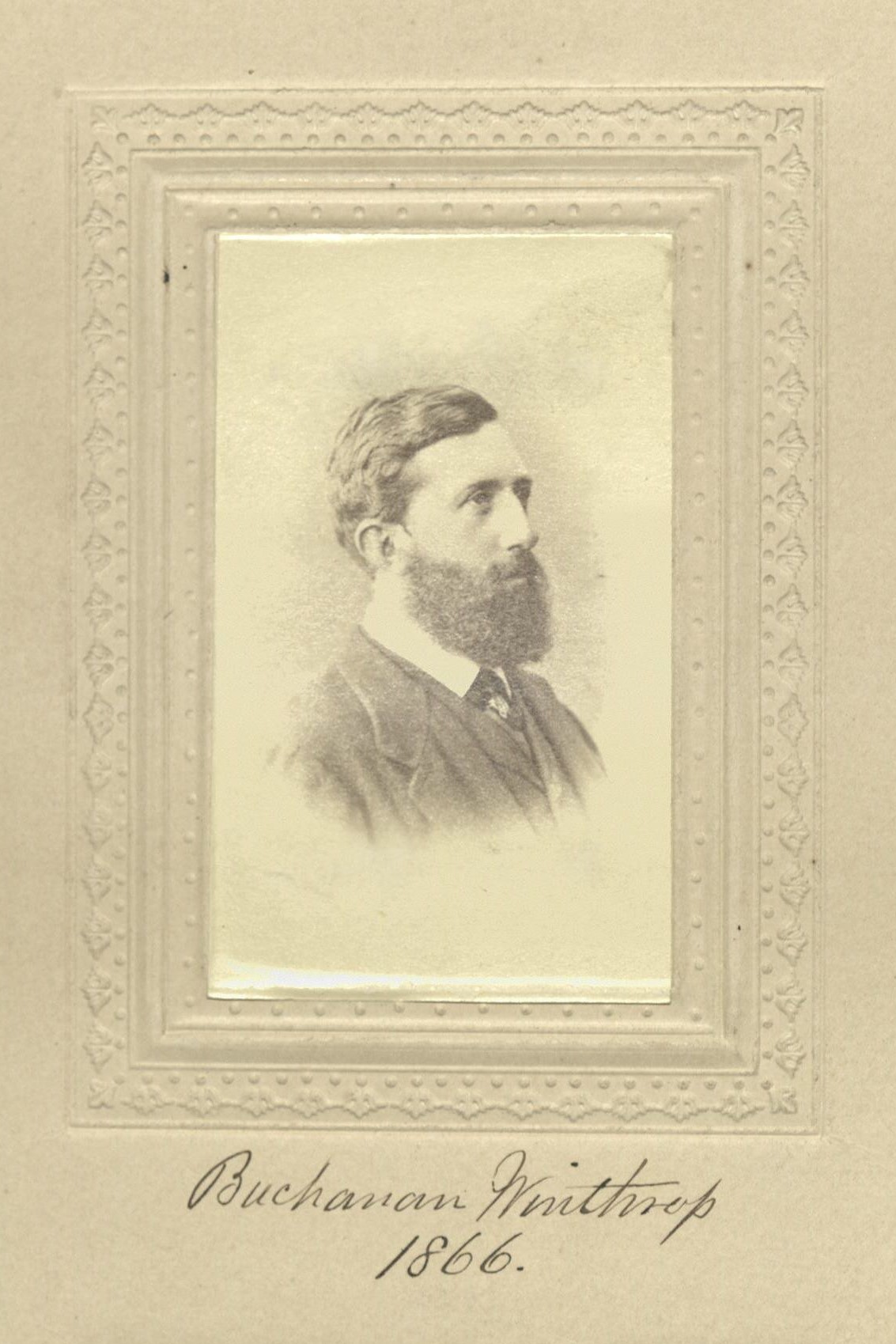Member Directory,
1847 - 1922
Daniel Huntington
Artist
Centurion, 1847–1906
New York (Manhattan), New York
New York (Manhattan), New York
Age thirty
Brooklyn, New York
- Julius Walker Adams
- George S. Appleton
- John Winthrop Auchincloss
- Samuel D. Babcock
- Arthur C. Coxe
- George S. Greene Jr.
- Robert Hoe II
- Robert Hoe III
- James P. Kirkwood
- Henry Augustus Loop
- William S. Mayo
- John P. McKewan
- J. M. Minor
- Russell H. Nevins
- Robert Morrison Olyphant
- James Lewis Parks
- George P. Putnam
- James D. Smillie
- Buchanan Winthrop
- Thomas W. Wood

Archivist’s Notes
President of the Century Association, 1879–1895; first vice president, 1868–1870; second vice president, 1874–1878; designated an honorary member in 1895. Father of Charles R. Huntington.
Century Memorial
With Daniel Huntington the last of the “Founders” passes—he who was a Centurion before The Century had a constitution, or a home of its own, and, by virtue of his membership in the Sketch Club, before it had even a name. Of the sixty years of our club life he was for sixteen—from 1879 to 1895—our President, and many of us recall the dignity, the simplicity, the wise urbanity with which he presided over meetings which in those slightly younger days were more fertile in dissidence and excitement than—perhaps unfortunately—they now are. His gentle and almost shy demeanor was quite consistent with definite opinions, shrewd judgment, and firm intentions, and his service to The Century was useful as was that to the organizations representing his own profession. His was a very long and full and fortunate life. Born in 1816, in this city, educated at Hamilton College, he cut short his other studies to take up the study of art under the inspiration of Charles L. Elliot[t], who also was, later, a founder of The Century, and became a pupil of Henry Inman and of Samuel F. B. Morse. Before going to Europe to study—which he did at twenty-three—he had made considerable progress in landscape and in genre painting. He spent several years in Rome, Florence, and Paris, returning finally to this country in 1845, and from that time was one of the most prolific of American artists, in varying sorts, but finally confined his labor to portraiture. Probably he was, on the whole, the most successful of the list, which is not so very extensive or of ancient date. His ventures in the field of historical and ideal art were extremely popular, and, through engraving, found appreciation in a great multitude of American homes, while many of the originals are preserved in private and public collections. But of the 1200 paintings reported to be the output of his brushes, 1000 were portraits, and these include among their subjects a greater number of the distinguished or notable men of his time than fell to the lot of any other artist to portray. Our own walls furnish ample examples of his method, which from the first was remarkably uniform, careful, faithful, sober, and firm, with the stamp of refinement, of respect for the sitter and for his own art. The fashion in painting changed greatly in the seventy years that Mr. Huntington followed his calling; but his work was valued to the last, and to the very last—within a few days of the end, when his mind was dim to other things—his hand plied the brush with its accustomed zest and skill. Mr. Huntington was intimately and efficiently concerned with the advancement of his profession. He became an Associate of the Academy of Design the year he sailed for Europe—1839—and an Academician the succeeding year, and he was (with an interval of ten years) for nineteen years the President of the Academy. He was one of the original Trustees of the Lenox Library and of the Public Library, to which the treasures of the Lenox were ultimately contributed, and he was a Trustee and Vice-President of the Metropolitan Museum of Art. He was also a vestryman and warden of Calvary Protestant Episcopal Church. Though for some years Mr. Huntington’s health did not permit him to visit the Club, his memory is, and long will be, cherished by all whose privilege it was to know him.
Edward Cary
1907 Century Association Yearbook
Related Members
Member Directory Home-
 William S. MayoPhysician/AuthorCenturion, 1850–1895
William S. MayoPhysician/AuthorCenturion, 1850–1895 -
 Robert Morrison OlyphantImporter/Railroad OfficerCenturion, 1863–1876
Robert Morrison OlyphantImporter/Railroad OfficerCenturion, 1863–1876 -
 James Lewis ParksRector, Calvary ChurchCenturion, 1899–1910
James Lewis ParksRector, Calvary ChurchCenturion, 1899–1910 -
 George P. PutnamPublisherCenturion, 1850–1872
George P. PutnamPublisherCenturion, 1850–1872 -
 James D. SmilliePainter/EngraverCenturion, 1877–1909
James D. SmilliePainter/EngraverCenturion, 1877–1909 -
 Buchanan WinthropLawyerCenturion, 1866–1900
Buchanan WinthropLawyerCenturion, 1866–1900 -
 Thomas W. WoodArtistCenturion, 1868–1903
Thomas W. WoodArtistCenturion, 1868–1903






